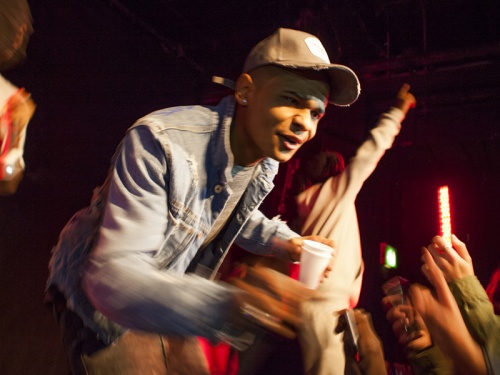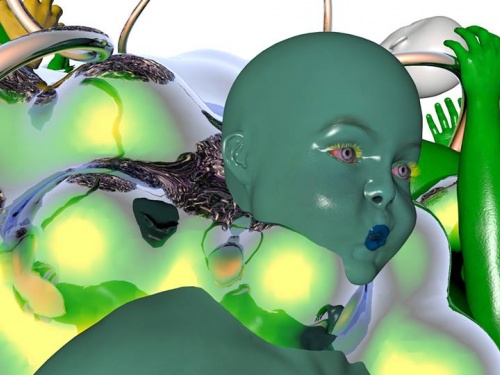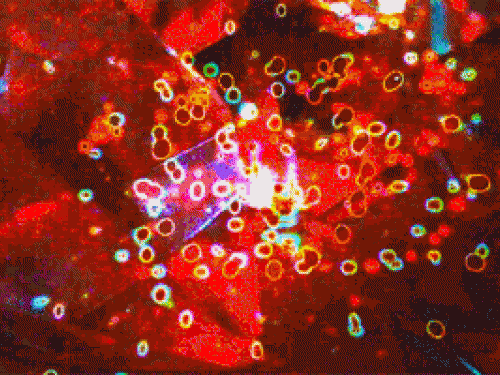TEXT2SPEECH: Contemporary Art and Cybernetics
TEXT2SPEECH is a new series of reading groups organised by the ICA Student Forum to provide a space for debate around an eclectic range of texts, with each meeting topically responding to a part of the ICA’s current programme. The group is free to join and open to all, encouraging anyone with an interest in contemporary art and theory to join either regularly or for one of the meetings.
ICA Student Forum organiser Jane Scarth has written an engaging summary of the discussion for the ICA Blog.
Our third reading group closely analysed a text by Etan Ilfeld entitled Contemporary Art and Cybernetics: Waves of Cybernetic Discourse within Conceptual, Video and New Media Art. The text was chosen to contextualise and respond to the archive exhibition Cybernetic Serendipity: A Documentation in conjunction with the major solo exhibition of French artist Neïl Beloufa, whose work engages with contemporary systems technologies.
In the text, Ilfeld argues for a history of cybernetics within art as occurring in waves, beginning in the 1950s to the present day. The key question that it prompted was: do recent practices have a relationship to the past and what, if any, is the value of creating this lineage? Overall, members of the group found elements of the text, such as the artists selected to illustrate Ilfeld’s art historical narrative, problematic. Yet it provided a sufficient prompt to consider what we understand by cybernetics in the contemporary moment.
Information itself began to be considered more important than the physicality of matter, energy and noise, thereby returning to a pseudo-Platonic ideal by envisioning information as a disembodied entity.
With varying degrees of success, Ilfeld regularly employs philosophical references to support his narrative. He introduces the argument that maps cybernetics onto conceptual art via the idea of information, equating the notion of ‘information as a disembodied entity’ with the dematerialisation of the art object.
Yet his focus on classical Greek philosophy was ultimately quite difficult to follow. This was not only explored through Plato’s notion of ‘form’, seen as a linguistic root of ‘inform’ and ‘information’, but also through ideals around techne later in the text.
This perspective appeared to be a central element linking cybernetics to art, yet it hinges on a relatively loose definition of information. Conceptual art is presented to be ‘very much aware of the cybernetic discourses’ of the 1950s. For example, Ifleld puts forward an argument for a reading of John Cage’s 4’33’’ (1952) as a ‘subversive deconstruction of [Claude] Shannon’s signal/noise binary’, in that the noise is the signal in this work. While one member of the group found this an enlightening viewpoint, others suggested that it unhelpfully de-contextualises Cage’s multifaceted practice.
Video art’s specificity is inherently reflexive; Video’s closed-circuit feedback technology enables the transmission of live images capable of denoting their own structural organisations.
In the text, video art is positioned as the central tenet of art’s relationship with cybernetics in the 1970s - 1990s, under the premise that reflexivity is key to the second wave of cybernetics. Ilfield argues that the feedback loop within video technology, specifically of the videotape, is a clear absorption of cybernetic discourse into art.
Ilfeld uses examples such as Nam June Paik’s TV Buddha (1974) and Bruce Nauman’s Live/Taped Video Corridor (1970) to illustrate this argument. Yet while these artists can be mapped onto the discourse that uses an expanded notion of ‘information’, their cybernetic relevance is not always convincing. By using canonical artists in this way (he also name-checks Marcel Duchamp, Sol LeWitt, John Baldessari, Raul Meireles, Jean Baudrillard and Chuck Close), the author seems to sweepingly suggest that the whole of conceptual art is influenced by cybernetic systems. Indeed, during our discussions this emerged as one of the major issues with the text as a whole.
Digitization shifted the notion of a “post object” into a virtual object
The final subsection generated a great deal of debate. Framed as ‘Mid-1990s to Present Day’, we felt that Ilfeld’s narrative of contemporary art that marries cybernetics and the digital left something to be desired. The emergence of Internet art since the 1990s has a very particular history. It is one that can be associated with cybernetics, although not necessarily in the same lineage that traces back to the 1950s.
Ilfeld takes great care in describing the early development of ‘net.art’ in a way that connects it primarily to the conceptualist dematerialisation of the art object. He also makes special effort to legitimise digital art by arguing that it is a form of poesis, a technology ‘operated in a non-instrumental mode of play’. We questioned whether it is really relevant today to go to lengths to make these claims, when art in the digital realm is increasingly common practice.
The range of perspectives in the room was fantastic for closely analysing, and prompting discussion in response to, the text. It also provided an opportunity to think about where we stand in relationship to cybernetics over 45 years since Cybernetic Serendipity at the ICA.
As it is seen in art today and illustrated in Neïl Beloufa’s work, Cybernetics often centres around very human notions of social systems and network theory, influenced by Giles Deleuze and Felix Guattari among other theorists. It made us consider whether or not this approach is useful in the context of a subject so entrenched in present modes of being. It is, at least, abundantly clear that it is a challenge to connect the variety of cybernetic thought in a linear manner to the diverse and ever fluid practices of artists. ■
Join us on Wednesday 21 January for our fourth meeting, where we will discuss a text by Julie Ault & Martin Beck ‘Drawing Out & Leading Forth’ (2006), from Notes for an Art School. The text looks closely at some of the recent changes that have taken place in art school education, interrogating different models of teaching and the ideologies inherent within them.
This article is posted in: Events, Student Forum
Tagged with: Jane Scarth, Etan Ilfeld, TEXT2SPEECH, learning, Cybernetics, Cybernetic Serendipity, Contemporary Art (Theory) Reading Group





